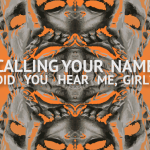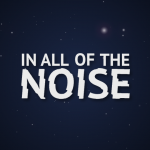Just over one month ago, Twitter launched its Twitter #Music website and iPhone app following the acquisition of music discovery site We Are Hunted. Now that the initial wave of hype and press coverage has dissolved, timelines have gone as quiet as before, with little adoption from industry figures or the general public and the app tumbling down iTunes app charts. Rather than declaring Twitter’s foray into a music service a flop so soon, however, I think there is still potential for Twitter #Music to become a useful and popular arm of the social network with a few changes and additions. Below are five suggestions that would provide more incentive for users and artists alike to continue using the platform to share and discover music.
1. Chart expansions: more genres, more services
Recently, Twitter #Music added ten genre-based charts to its existing Popular, Emerging, and Unearthed lists (along with new Superstars and Hunted charts). This is a good start for culling music into more specific subcategories, but additional charts could be used for more appropriate and in-depth classification. For example, the iTunes Store has 22 categories, including those like jazz, soul, and reggae that do not fit squarely into one of the ten pre-existing genres in #Music.
In addition to the genre charts, Twitter #Music’s five additional charts sort music of all genres based on popularity and virality, including those focused more on music discovery that helped We Are Hunted receive praise well before its acquisition. The original site also included a chart that displayed the Billboard Hot 100 with their own design and playback specifications. Reproducing such charts within the Twitter #Music experience would allow users to find and follow artists more easily, and since it has already built relationships with iTunes, Rdio, and Spotify, reframing theirs within the app would likely be a simplified process. This relationship could work both ways: charts could be saved or regularly published as Rdio and Spotify playlists (something that Billboard already does with Spotify, Rdio, and MySpace), encouraging users to visit streaming sites in addition to #Music. This would require the service to move past its one-song-per-artist ideology, however, which may explain the lack of a Billboard chart carried over from We Are Hunted to Twitter #Music.
2. Tastemaker discovery and recommendations
Much of the focus of the Twitter #Music experience is on artists. The search function only delivers results for artists; each artist is displayed with only one song, favoring the try-before-you-buy approach of offering one track with the option to dig further on another service at your own leisure; and the only Twitter users that can be followed are the artists themselves. With Twitter being inherently social, however, its music service would benefit from adapting the traits that have encouraged social activity by including a focus on end users as well. Interacting with fellow Twitter users between the social network and the music app is surprisingly a one-way street: tweets with the #nowplaying or #np hashtags get pulled into the #Music app, but #Music does not currently show Twitter users who have shared certain songs, and in order to see what another user is sharing within the app, the only option is to manually replace the username in the URL of a profile.
One such potential method of focusing on user interaction is in the artist listings throughout the app. Currently, no further data is presented beyond the artist and their chosen song. Why not bring Twitter users into the mix? Much like Twitter search results reveal users who are tweeting about a certain search term, clicking on an artist could display a timeline of the tweets including the artist and the #nowplaying (or #np) hashtag. Not only would this provide data about the fans of an artist, but it would give users more incentive to share music on Twitter, lending to the heard-it-first principle that powers music blogs and sites like TastemakerX.
Additionally, a central method for Twitter users to recommend artists to one another would be beneficial to music fans and musicians alike. Spotify and Rdio both offer this option already, but integrating a recommendation-sharing system within #Music with the potential to auto-tweet to users’ Twitter feeds and use Twitter Cards to link into the app would reach more users and likely provide higher engagement between all parties. As users discover music, direct sharing to friends would give them the appeal of being a tastemaker, while the inclusion of the artist’s Twitter handle in the recommendation would encourage and ease the act of following them.
3. Separate follow lists between Twitter and #Music
When first exploring Twitter #Music after its public release, I was excited to find that I could follow artists on the app without having them inserted into my Twitter timeline as well…or so I thought. Under the current setup, if I want to follow an artist’s music tastes in my Twitter #Music feed, I can only follow them on Twitter, with no ability to filter general tweets from those with music links. For artists that I only want to follow for their music taste, an additional follow option within Twitter #Music would allow such a separation. This would be beneficial in the same way for following users with good music recommendations as outlined in the previous paragraph, with the option to follow all of the tastemaker’s tweets on Twitter at each user’s own discretion.
4. Expand search beyond artists
As previously mentioned, Twitter #Music’s search option only displays results for artists, with no option to search songs, users, or tweets. Should the details of users’ tweets be included in a future update to the app, an expanded search would enable users to find music based on certain search terms and hashtags. Much like Songza offers a “Music Concierge” option for curation based on a given day and mood, searching for “#musicmonday” or “study music” could offer the same results on Twitter, with curation provided by users rather than being programmed by developers. In the same way, music curated around trends based on current events could provide a soundtrack to the day. While #nowplaying and #np are good choices for Twitter #Music to begin sorting tweets, a search expansion would allow users to define their own methods for filter music and discover artists based on more specific criteria.
5. Connect to more artists and audio services
First created in September 2011, the @TwitterMusic department has worked with artists to get them on Twitter and to use the platform for connecting with users and marketing new projects, among other things. However, there are still a few noticeable gaps with artists who have yet to join the social network. For example, while the buzz for Daft Punk has grown to a deafening roar up to this week’s album release, they are completely invisible on Twitter #Music, regardless of how much they are being properly shared by users, merely because they do not have an official presence on the site. While it is extremely implausible to suggest all artists will join Twitter, the Twitter #Music app could compensate for missing artists by providing a basic profile with data sourced from iTunes, which could be filled out if the artist joined Twitter at a later date. This would ensure the accuracy of the app’s charts even despite artists missing from the service, and might even encourage artists to sign up for Twitter to benefit from the additional exposure on the app.
While it would require creating additional partnerships, #Music would also benefit from adding more audio services for users to stream content. In particular, We Are Hunted sourced its audio from SoundCloud before it was acquired by Twitter, so its absence is somewhat peculiar. Unlike Spotify and Rdio, SoundCloud does not require a subscription for users to stream full audio, which would make music easier to hear through the app should it be included as well. The addition of Amazon MP3 as a retailer and streaming services like MOG, VEVO, and YouTube would also improve user accessibility to the music shared within the app. Naturally, deals with record labels would have to be reached beforehand, which is likely causing the current delay in adding such options.
With limited adoption and a lack of updates to the service thus far, many people have already written off Twitter #Music as a failure. However, with only a month of history written since its public release, there is still a long path of progress before #Music, making it unnecessary to throw in the towel so soon. In the same way, it took time for Twitter itself to grow and build its now-massive membership. Updates including additional social integration, search capabilities, and compatibility with new music services would help Twitter’s newest service to become more accessible, user-friendly, and functional for music discovery. Despite the death bells already ringing, Twitter #Music isn’t dead just yet — for now, let the music play.




